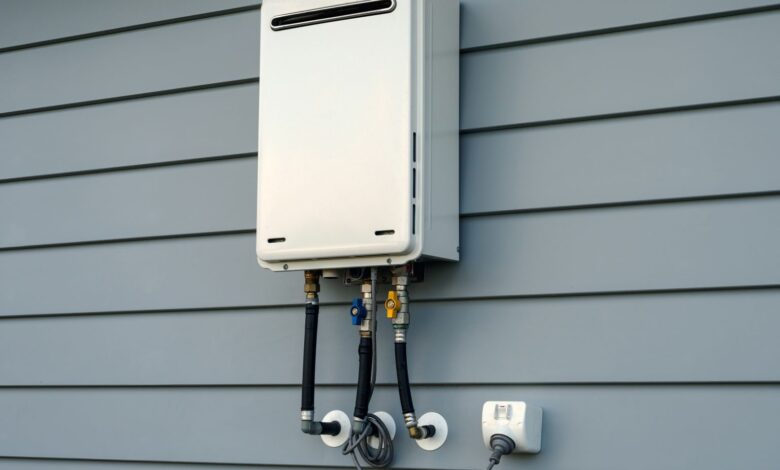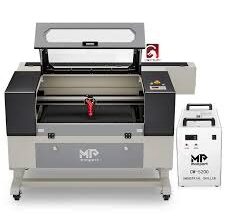Unveiling the Cons of Tankless Water Heaters

Tankless water heaters had been making waves inside the plumbing world, lauded for their area-saving layout and promise of countless warm water. But before you ditch your trusty tank version and soar at the tankless bandwagon, it’s essential to recognize the capacity downsides of this on-call for heating machine. While they boast a few remarkable blessings, cons of tankless water heater include a completely unique set of challenges that won’t be a super fit for each household.
In this complete manual, we’re going to delve into the big cons of tankless water heaters, arming you with the expertise to make an knowledgeable decision approximately your hot water desires.
Financial Considerations: A Hefty Upfront Investment
One of the biggest deterrents for lots homeowners thinking about tankless water warmers is the sizable in advance price.
Tankless devices themselves are usually to 3 instances more high-priced than conventional tank-style warmers. On pinnacle of that, set up expenses may be substantially higher due to the potential want for:
Upgraded fuel strains or electrical wiring: Tankless warmers often require large gasoline strains or thicker electrical wiring to deal with the extended demand for gas. Upgrading those can be a sizable expense.
New venting systems: Depending on the selected version, a new venting machine is probably essential to well expel exhaust fumes. This can upload a layer of complexity and value to the installation.
Water stress changes: Some tankless warmers require higher water stress to function correctly. If your own home’s water strain is insufficient, a booster pump might be wanted, similarly increasing the set up value.
While the energy financial savings of a tankless heater can offset those initial charges over the years, it is able to take several years to recoup the investment. This extended payback duration may not be ideal for every body, mainly in case you don’t plan on staying in your own home lengthy-time period.
Flow Rate Frustrations: Not Endless After All
Unlike traditional cons of tankless water heater that have a pre-heated reservoir, tankless models warmness water on demand. This manner they have a confined drift price, which refers to the quantity of warm water they could produce in step with minute. A typical tankless heater provides among three.
Five and 10 gallons according to minute, which is probably sufficient for a unmarried bathe or tap. However, if you have more than one hot water demands taking place concurrently, including walking the dishwasher and a shower, the waft charge can become insufficient.
This hassle can cause a cascade of inconveniences:
Fluctuating water temperature: If the call for for hot water exceeds the unit’s float charge capability, the water temperature might emerge as lukewarm, mainly in situations in which hot water is utilized in more than one places straight away. This may be a irritating revel in, mainly for those who revel in a consistent warm shower.
Shower struggles: A low glide price can make showering a less than exciting experience, with reduced water strain and inconsistent temperature. Nobody desires a lukewarm bathe after a long day!
Appliance scheduling: You would possibly need to stagger warm water utilization to ensure ok go with the flow for every appliance. This can disrupt your daily workouts and create a sense of inconvenience.
Scalding Risks: Burn Prevention Takes Priority
Since tankless warmers warmness water immediately, there is no thermostat to alter the output temperature. This can pose a chance of scalding, specially for young youngsters or aged folks who may be more susceptible to burns. Some tankless fashions include built-in tempering valves that mix hot and bloodless water to save you scalding.
But it’s an delivered characteristic that increases the cost and complexity of the unit. It’s critical to do not forget the safety implications, specially if you have younger children or aged family members on your household.
Maintenance Needs: Beyond Set-and-Forget
While generally considered low-maintenance, tankless water warmers do require ordinary cleansing and preservation to make sure most appropriate performance and lifespan. This normally includes:
Annual flushing: Hard water deposits can building up inside the unit, reducing its efficiency. Regular flushing with a vinegar answer or a expert descaling provider is essential to preserve proper feature.
Filter replacements: Depending for your water nice, you might want to replace sediment filters often to prevent clogs and make sure right water glide. Neglected filters can drastically effect the performance of the heater.
Vent cleansing: Regular cleansing of the venting machine is important to prevent the accumulation of flue gasses and make sure secure operation. A clogged vent can pose a safety threat and prevent the heater’s efficiency.
These maintenance needs add to the general fee of possession and require some level of property owner involvement or professional carrier calls. Factor in those ongoing expenses while considering the long-time period investment of a tankless device.
Climate Concerns: Not Ideal for Frigid Conditions
Limited Availability and Service Challenges
Tankless water warmers are not as ubiquitous as conventional tank models. This can pose demanding situations in two ways:
Limited choice: You would possibly have fewer alternatives to choose from as compared to traditional heaters. This can restriction your capacity to find a unit that completely suits your needs and price range.
Finding certified carrier technicians: Since tankless era is much less common, finding qualified technicians for installation, renovation, and upkeep might be greater tough, mainly in smaller towns or rural areas. This ought to cause longer wait times and probably better provider costs.
Space Considerations: Not Always Compact
While typically extra compact than conventional tank heaters with massive garage capacities, some tankless fashions can nonetheless have a tremendously huge footprint. This may be a concern for house owners with restrained space, mainly while thinking about venting needs and clearances around the unit.
Gas-powered fashions: These frequently require unique venting structures (regularly made of PVC or stainless steel) that could upload to the overall footprint of the set up.
Electric fashions: Electric tankless models might require devoted electrical panels depending on the unit’s wattage. This can restriction placement alternatives and require additional electric work for the duration of installation.
Before opting for a tankless heater, make certain you have got ok space for the unit itself and the venting gadget.
Installation Complexities: More Than Just Plumbing
Installing a tankless water heater can be a greater complex method in comparison to a traditional tank model. Depending in your present plumbing and gas strains, big adjustments is probably important. These should encompass:
Upsizing gasoline traces: As cited earlier, tankless heaters often require larger gasoline strains to address the accelerated gas call for. This might contain rerouting current gasoline strains or putting in completely new ones, adding time and price to the venture.
Upgrading electrical wiring: Electric tankless models may require thicker electric wiring to accommodate the high amperage draw. This could necessitate rewiring or putting in a committed circuit breaker.
Vent gadget set up: Depending on the chosen version and local constructing codes, a brand new venting system is probably had to safely expel exhaust fumes. This adds a further layer of complexity and price to the set up procedure.
Water pressure changes: If your house’s water stress falls underneath the minimum requirement for the tankless heater, a booster pump is probably necessary. This adds every other thing to the device and increases installation complexity.
These capability modifications can notably amplify the installation time and cost. Consulting with a certified plumber or HVAC technician is essential to evaluate your existing setup and determine the feasibility and fee of installing a tankless heater in your property.
Potential for Noise Disruption
While usually quieter than conventional tank heaters with gas burner ignitions, tankless models can nevertheless generate some noise at some stage in operation. The sound comes from the water flowing thru the unit and the gas burner igniting. The noise degree can range depending at the version and its vicinity in your private home. Here’s how noise might be a concern:
Placement matters: If the tankless heater is installed near a bed room or toilet, the noise might be disruptive, especially all through quiet times like early mornings or evenings.
Sound versions: Some fashions is probably inherently louder than others. Researching noise ranges before shopping a tankless heater allow you to pick out a quieter option.
Reduced Lifespan in Hard Water Areas
Hard water, rich in minerals like calcium and magnesium, can drastically effect the lifespan and overall performance of a tankless water heater. These minerals can build up inside the warmness exchanger, lowering its efficiency and doubtlessly leading to premature failure. Here’s how hard water can affect your tankless system:
Mineral buildup: Hard water deposits can clog the warmth exchanger, hindering the unit’s ability to switch heat effectively. This reduces warm water output and increases power intake.
Shorter lifespan: Without proper preservation and mitigation strategies, tough water can considerably shorten the lifespan of your tankless heater.
If you stay in an area with tough water, a water softener is surprisingly encouraged to prevent mineral buildup and enlarge the lifestyles of your tankless heater. The additional value and protection of a water softener should be factored into your selection.
Summary:
Like any plumbing device, tankless water warmers have the capability to leak. Leaks can occur due to faulty connections, corrosion, or improper installation. A leak in a tankless heater can be in particular unfavorable, as it can reason water harm to your home and surrounding areas.





